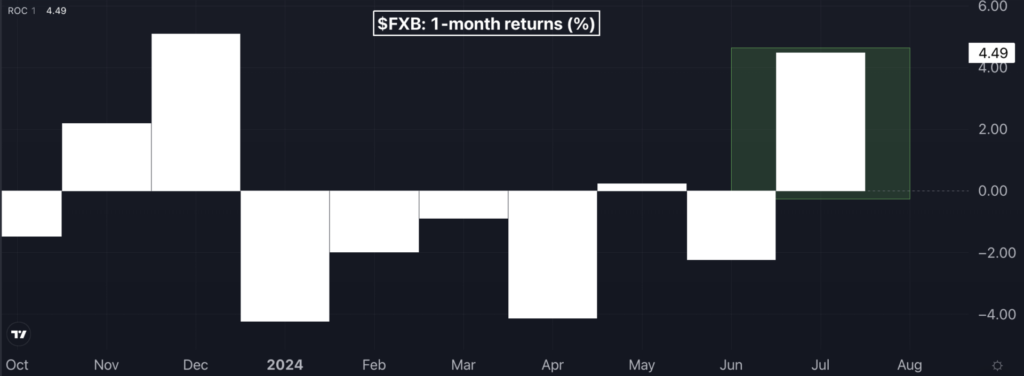Zinger Key Points
- Three major central banks meet this week, testing market resilience as traders anticipate interest-rate shifts from the Fed, BoJ, BoE.
- A rate hike could occur in Japan, while the Bank of England is anticipated to cut rates by 25bps, but both decisions remain close calls.
- Volatility can create massive trading opportunities—if you know how to capitalize on it. On Sunday, March 23, at 1 PM ET, Matt Maley is revealing the strategies behind his recent trades made in this volatile market, which have delivered gains up to 450%. Click to register for free.
Three of the world’s leading central banks are set to meet this week, posing one of the most crucial tests for markets as traders brace for interest rate shifts.
The Federal Reserve will commence its two-day Federal Open Market Committee meeting Tuesday. The policy statement and Fed Chair Jerome Powell‘s press conference are scheduled for 2 p.m. and 2:30 p.m. ET Wednesday, respectively.
Early on Wednesday morning, the Bank of Japan will hold a high-stakes meeting in Tokyo that could result in an interest rate move.
At 1 p.m. ET Thursday, the Bank of England will meet. Analysts perceive this as a tight decision between holding rates steady or enacting rate cut, which would be the first in over four years.
What to Expect From The Federal Reserve
The Fed is expected to keep interest rates unchanged at the upcoming FOMC meeting. Market-implied odds indicate a 95.6% chance that rates will remain on hold at 5.25-5.5%, with a rate cut fully priced in at the next meeting in September.
Traders will closely watch the Fed’s assessment of recent economic data, progress on inflation and whether Powell signals that a September rate cut is forthcoming.
“The Fed is optimistic that cuts are likely in the near term, but we do not think it is willing to signal September is a done deal,” wrote Bank of America this week.
Since the FOMC's June meeting, participants have noted better inflation readings in recent months following firmer prints in the first quarter.
“We've been very clear that you wouldn't wait for inflation to get all the way down to 2%” [before cutting interest rates,] Powell said in his latest public appearance this month.
He might also reiterate that an unexpected weakening in the labor market could prompt rate cuts.
“The main reason that the FOMC is closer to cutting is the favorable inflation news from May and June,” wrote Goldman Sachs economist David Mericle.
Goldman Sachs expects the FOMC to revise its statement to acknowledge “further progress” toward the 2% inflation goal, balancing the risks to the dual mandate more evenly and indicating that it now requires only “somewhat” greater confidence in the inflation outlook to start lowering interest rates.
What To Expect From The Bank of Japan
Considerable anxiety surrounds the Bank of Japan’s meeting, as the decision on a rate hike or hold remains uncertain.
Despite recent market volatility, Bank of America’s Japan and Asia economist Takayasu Kudo expects the BoJ to proceed with a small hike, raising the policy rate from the current zero to 0.1% to 0.25%.
“The BoJ has indicated that it would adjust the degree of monetary easing further should the economy and prices move in line with its baseline scenario. Recent wage and price data, as well as the June BoJ Tankan, point to further progress in underlying inflation,” Kudo wrote.
The consensus view of economists tracked by TradingEconomics is for the BoJ to remain on hold.
In addition to a potential rate hike, the BoJ will announce details of its planned reduction in Japanese government bond purchases over the next one to two years, though uncertainties remain regarding the exact size and pace of these cuts.
The Japanese yen, tracked by the Invesco CurrencyShares Japanese Yen Trust FXY, has rallied over 4% in July against the dollar, marking its strongest month year-to-date, suggesting traders may be anticipating a rate hike.
Chart: Yen Rallies In July, Eyes Strongest-Performing Month Since December 2023

Image: Benzinga Pro
What To Expect From The Bank Of England
Bank of America’s U.K. economist Sonali Punhani expects the BoE to cut the Bank Rate by 25bps to 5% in August with a 5-4 vote, citing mixed data and a dovish stance, but emphasizes that this is a close call.
Punhani advises investors not to expect clear guidance on future rate paths, as the BoE is likely to focus on data and proceed cautiously with any future cuts, avoiding signaling the start of a sustained cutting cycle.
Goldman Sachs economist Sven Jari Stehn expects a similar outcome, also noting the decision to lower the Bank Rate is a close call and suggesting a low bar for the Monetary Policy Committee to delay the first cut until September.
“If the MPC does indeed lower the policy rate, then we would expect the updated guidance to be non-committal on the timing of further cuts,” Stehn said.
Earlier this month, the British pound reached 1.3045 against the U.S. dollar, its highest level in nearly a year. The Invesco CurrencyShares British Pound Sterling Trust FXB is up 1.6% this month.
Read Now:
Illustration of Federal Reserve Chair Jerome Powell created using artificial intelligence via MidJourney.
Edge Rankings
Price Trend
© 2025 Benzinga.com. Benzinga does not provide investment advice. All rights reserved.
Trade confidently with insights and alerts from analyst ratings, free reports and breaking news that affects the stocks you care about.